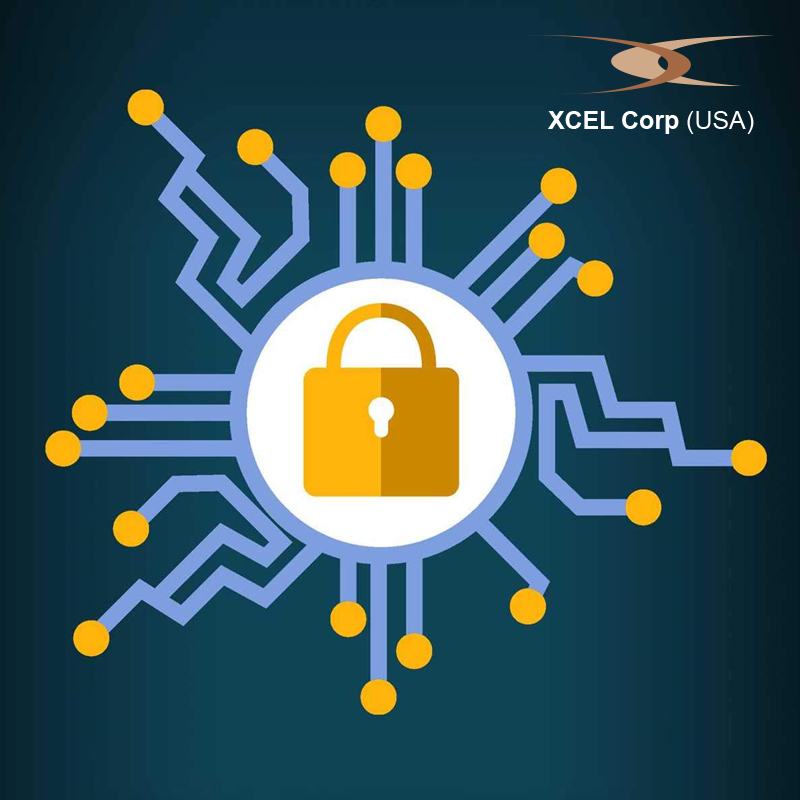
The first part of the cybersecurity series dealt with the importance of IoT security and the different types of threats prevalent in the internet-connected-devices industry. Part 2 of the series will deal with tackling IoT security issues across several major threats.
IoT security issues
Xcel Corp leverages the full power technology to ensure that security issues revolving around IoT devices are efficiently assuaged. Most certainly, privacy is a big concern and not just with IoT but several connected devices that provide information-sharing and remote access services. With unprecedented sophistication, hackers and intruders, infiltrate them through private sources, public networks or using Wi-Fi and other advanced methodologies to capture data.
These are some of the biggest Cybersecurity issues that have to be addressed urgently before anything else.
Web interface insecurities
Hackers gain access to all of your IoT-enabled solutions through plain text credentials, phishing, SQL injection, and even other advanced level methods if you do not take appropriate measures to secure your system. You must ensure that all your web interfaces have been tested for SQL, CSRF and XSS vulnerabilities. Furthermore, a strong password or locking mechanism should be applied and a well-tested solution must be implemented to identify unauthorized accesses. Credentials should not be sent in plain text and efficient encryption algorithms to be designed for detecting third-party anomalies so that timely warnings can be sent to users.
Inadequate authentication
Data loss, lack of accountability and denial of service attacks are usually a result of inadequate or insufficient authentication processes. It is extremely important to maintain hierarchical authorization procedures so that every device, app, and the user has a distinctive identity and an effective method to distinguish them. 2-factor authentication must be implemented along with encryption across all networks and mutual authentications.
Network Services insecurity
Users are attacked by cybercriminals over insecure networks, which may be either internal or external. While DDoS attacks can be injected too, businesses and enterprises must be wary of these conditions. None of the ports should be available to intruders and outsiders. Additionally, internet traffic must be filtered from intranets and VPNs and a good networking mechanism established. Employees should not be allowed to expose business devices to insecure public networks thus limiting their usage outside of the organization.
Transport encryption
Effective measures are not taken within the network traffic due to applications that come with insufficient Transport layer protection. Better encryption standards should be applied while monitoring applications that are accessed through the IoT device. Communication constraints must be placed as well.
Concerns of privacy
While installing IoT devices, privacy can be compromised, which is also one of the biggest security concerns. Smart hackers with bad algorithms can make the worst things happen. To alleviate this, all operating systems installed into the devices must be verified. All applications must be sandboxed correctly and furthermore, devices must have in-built abilities to defend themselves against remote code execution attacks and other harmful intrusions.
Cloud and mobile interface securities
While there are several buyers for cloud and mobile, these services do not come with adequate security. The efficiency of cloud is growing constantly but some insecurities still exist that are passed on to IoT too. Mobile, web and cloud testing must be performed to ensure that they do not contain CSRF vulnerabilities, SQL injection or XSS. Powerful vulnerability and anomaly detectors and strong encryption and authentication mechanisms should be in place.
Secure solutions
Protocols along with solutions have to be developed and tightened across vendors, manufacturers, and suppliers. Customers should also be made aware of the usage of smart technology in a secure manner. IoT devices are sophisticated but cybersecurity implementations have not grown intelligent yet. Therefore, every business and home should keep in mind the threats that come along with IoT, while they leverage the benefits of modernism. IoT users must adopt good cybersecurity solutions in the wake of these risks.
The devices alongside the gateways that connect them to the networks must both be secured. IoT devices are seldom switched off, which means they are continuously connected and exposed to threats. These are perfect avenues for infiltration, unlike human-controlled devices that require a one-time authentication. The overall security system must be improved especially with concerns of huge repositories where data gathered from IoT is stored. Big data is one of the most attractive targets for hackers.
XCEL Corp
With massive data breaches and thefts in the recent past, efforts are underway to make sure that data associated with IoT remains secure and the consumers’ privacy is protected while constructively allowing corporations and businesses to function. Experts at XCEL Corp will secure your IoT through safe-guarded development, design and implementation. We perform secure code reviews along with assessments, analysis and security operations. Digital protection against online predators, cyberbullying and inappropriate requests are screened. For a home, we provide all-around safety as you get notified about verbal attacks, aggressive language and much more.
The nature and visibility into all of the connected devices are provided by us as we identify and secure them. We use the latest technological, even hardware-based cybersecurity solutions so that you have a secure recipient network.
Reach out to experts at XCEL Corp for the right cybersecurity solutions for your IoT devices.


